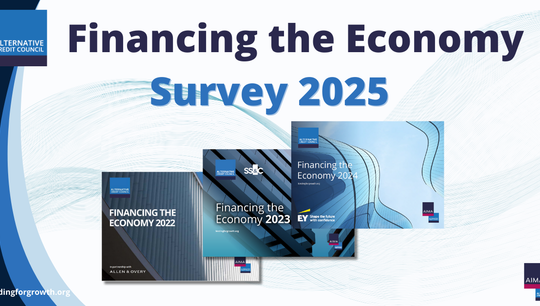Managing withholding tax on private credit investments
By Stuart Sinclair; Clare Eagle, Ernst & Young LLP
Published: 18 March 2024
As the granting of relief from withholding tax (WHT) on cross-border payments continues to come under increased scrutiny from tax authorities globally, it is important that managers of private credit funds carefully consider the potential impact of investment-level WHT in their funds. In this article, we discuss approaches to managing WHT in respect of private credit investments, taking into account some common themes we have recently observed in the practices of source-country tax authorities and courts.
Treaty relief
Currently, the most common approach to managing WHT in respect of private credit investments is to seek relief under the double tax treaty, if there is one, between the investee country and that of the fund entity that owns the assets.
In a private credit fund, the entity that owns the assets is, in many cases, a holding company which is a direct or indirect subsidiary of the main fund entity or entities. Asset holding companies are used in this context because of the various commercial and administrative benefits they provide, including that they typically have limited liability, are tax-opaque, and facilitate the segregation of different assets or pools of investor capital.
The double tax treaty between the investee country and that of the recipient entity will typically require that, for WHT relief to be available in respect of an amount of income, the recipient must be tax resident in one of the two contracting jurisdictions, the recipient must be the beneficial owner of the income, and the principal purpose test must be met (meaning the arrangements in question do not have a main purpose of obtaining treaty benefits in a manner which is contrary to the object of the treaty).
In the context of an asset holding company, the residence requirement is typically met by ensuring that the company in question is, and remains at all times, liable to tax in its treaty jurisdiction by reason of its place of incorporation or its place of effective management and control. This usually requires governance controls over the composition and procedures of the company’s board of directors (or equivalent in the relevant jurisdiction).
We discuss below some common themes we have recently observed in the approaches taken by source-country tax authorities and courts when assessing the beneficial ownership requirement and the principal purpose test. We would note that the approaches taken (including the weightings given to each of the factors discussed below) vary between jurisdictions and continue to develop. Fund managers should therefore seek to understand and monitor the practices of each investee country relevant to them.
- Privilege to benefit
It is common for source countries to consider, as a starting point, whether the recipient enjoys full privilege to benefit directly from the income in question. This condition will generally be met where it can be shown that the recipient is not bound in any legal, commercial, or practical terms to pass that income on to another person.
For an asset holding company in a credit fund, particular attention should be paid to arrangements surrounding any financing instruments used to fund the company, such as profit-participating loans or notes. Care should be taken to ensure that such arrangements do not contractually or otherwise bind the company to pass its investment income on to the lender, or materially restrict the ways in which the company can use the income for its own business purposes (e.g., covering its operating expenses and investing the income into new assets).
- Substance
Source countries are increasingly taking into account the level of local operational substance in the recipient entity. They may consider various factors in this regard, including employee headcount, where the entity’s directors are based, and whether the entity has a physical office space. The concept of substance is receiving increasing attention in tax policy internationally, and in this context fund managers should consider taking measures to ensure asset holding companies in their funds have appropriate local substance.
The measures that are relevant and proportionate will depend on the situation, but could include establishing any new asset holding companies in the same country or countries as those in which the management group has existing operational presence (if appropriate), consolidating (i.e., reducing) the number of asset holding companies used in each fund, employing staff in, or seconding staff to, asset holding companies, and providing asset holding companies with formal access to local office space.
- Location of investors
Some source countries may request information on the tax residence of the ultimate investors in a fund. They may generally be less likely to challenge an arrangement if all or a significant proportion of those investors are tax resident in either the same country as the asset holding company or a country which itself has a treaty with the source country, where that treaty provides equivalent benefits.
- Profit margin
Certain tax authorities and courts may take into consideration the taxable profit margin of the recipient entity. In cases where that margin has been deemed to be too low, this has been used to support the view that the entity is a conduit and not the beneficial owner of the income. The profit margins that have been considered appropriate in this context have varied widely depending on, inter alia, the types of investments held, and the nature of the activities undertaken by the entity. Fund managers should take care to ensure that the taxable profit of each asset holding company appropriately reflects the functions performed, assets owned, and risks borne by that entity.
- Other considerations
When assessing claims for treaty relief, and particularly when considering the principal purpose test, source-country tax authorities and courts can and do take into account any factors that they regard as relevant to a given case. By way of illustration, in the UK, HM Revenue & Customs have indicated in published guidance that they are more likely to grant WHT relief on interest paid to a non-UK resident company which is itself funded by listed debt that would have qualified for the UK Quoted Eurobond Exemption had it been issued by a UK tax resident company.
Before leaving the topic of treaty relief, it is worth noting that certain recently negotiated double tax treaties specifically grant treaty protections to particular types of investment funds that are established in corporate form, deeming them to be tax resident for the purposes of the treaty and the beneficial owner of their income, where certain conditions are met. It remains to be seen whether this becomes a more widespread trend. We expect that asset holding companies will continue to be used, given their commercial and administrative benefits. However, where an asset holding company is owned by an investment fund which would, itself, qualify for equivalent treaty benefits with the underlying investment jurisdiction, it would seem to help support that asset holding company’s entitlement to treaty relief. This is an area worth monitoring.
Domestic-law relief
In our experience, seeking treaty relief continues to be the most common approach to managing investment-level WHT in private credit funds. However, we would note that in some cases, one or more domestic-law WHT reliefs may be available in the source country. Where it is available, domestic-law relief can potentially be preferable to treaty relief. This may be the case, for example, if domestic law provides a lower rate of WHT than the relevant treaty or if the two routes provide equivalent relief but the domestic-law route is administratively simpler.
The specific circumstances in which domestic-law relief is available vary considerably between source countries and need to be checked on an investment-by-investment basis. By way of illustration, however, UK domestic law provides (inter alia) the following interest WHT exemptions which may be relevant to some private credit investments.
- Interest paid on a qualifying private placement (QPP)
A QPP is an unlisted debt security which meets certain conditions, including that the term of the security is not more than 50 years and the placement has an aggregate value of at least £10 million, the borrower is not connected with the lender, and each lender has provided to the borrower a certificate confirming they are tax resident in a country with which the UK has a tax treaty containing a non-discrimination clause.
- Certain UK-to-UK interest payments
Interest paid by a UK tax resident company to another UK tax resident company, or to a UK permanent establishment of a non-UK company, is exempt from UK WHT.
- Interest paid by a qualifying asset holding company (QAHC)
Interest paid by a UK QAHC is exempt from WHT. QAHCs are increasingly being used as asset holding companies in various types of private asset fund. This includes private equity funds, where a QAHC may be used as the bidco that takes on leverage from a third-party lender. Although such leverage is typically provided by banks, this funding may in some cases be provided by a private credit fund. Where such a fund has undertaken lending to a QAHC, the interest income it receives should be exempt from UK WHT.
Closing thoughts
As the taxation of cross-border transactions continues to receive increasing attention in tax policy discussions around the world, it is important that managers of private credit funds carefully assess the routes that may be available to them for the management of investment-level WHT in their funds. Although there are certain common themes in the approaches taken by source countries to granting WHT relief, the practices of tax authorities and courts, with regard to both treaty and domestic-law WHT relief, continue to vary between jurisdictions, and managers should seek to understand and monitor the practices of each investee country relevant to them.
The views reflected in this article are the views of the authors and do not necessarily reflect the views of the global EY organisation or its member firms. This publication contains information in summary form and is therefore intended for general guidance only. It is not intended to be a substitute for detailed research or the exercise of professional judgment. Member firms of the global EY organisation cannot accept responsibility for loss to any person relying on this article.












